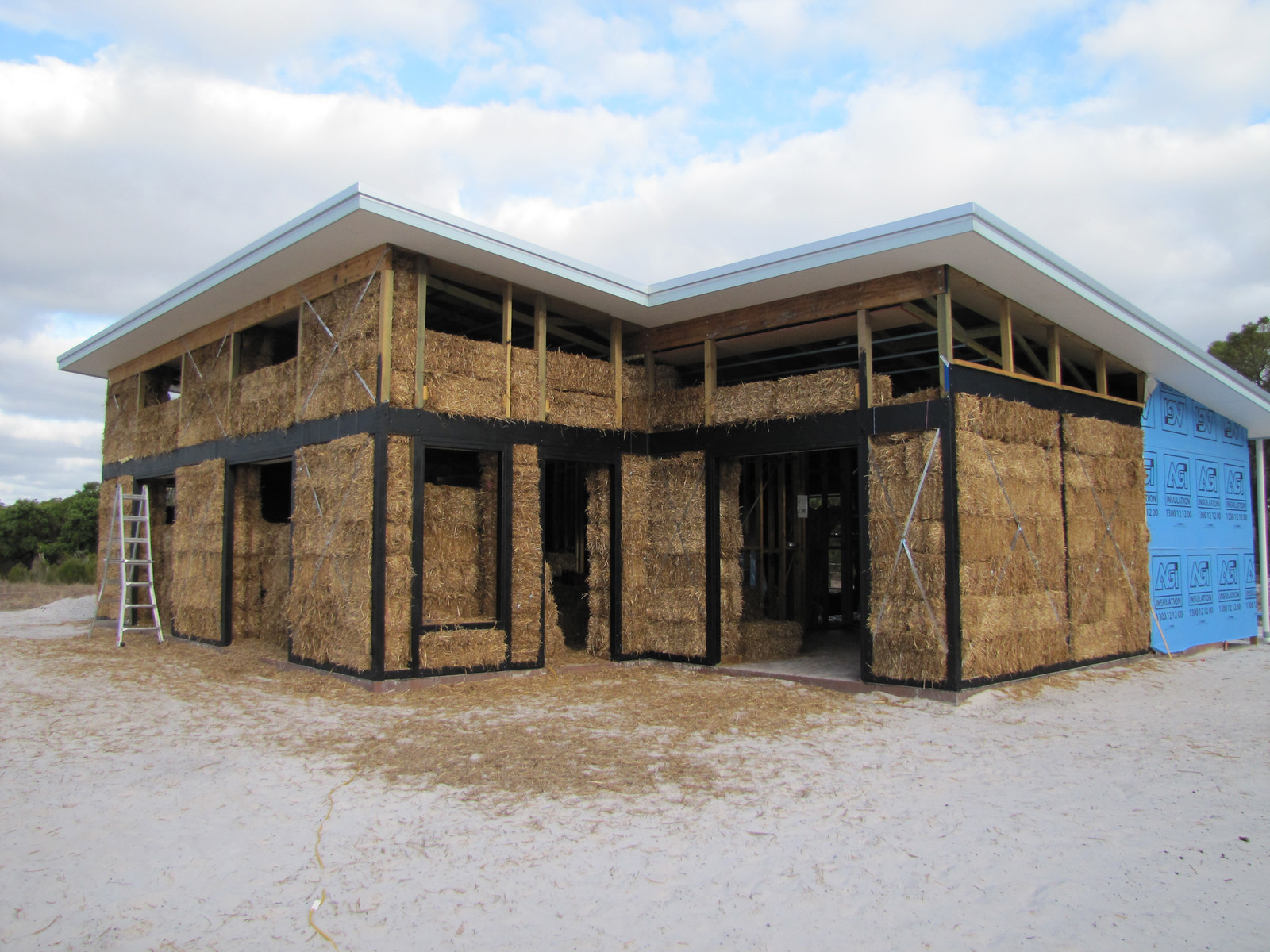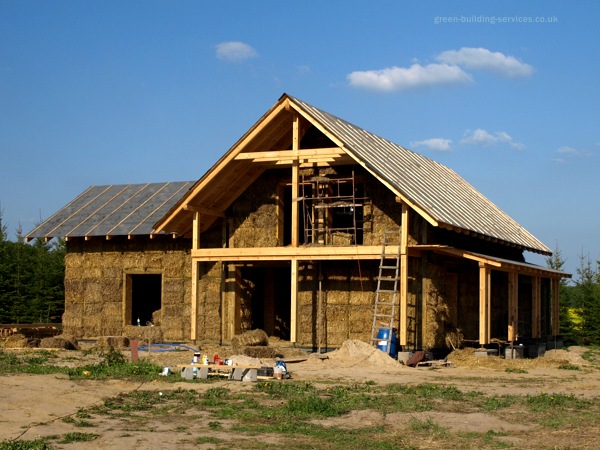Introduction to Straw Bale Houses
It may seem counter-intuitive to live in a house made of straw, but straw bale house construction has many advantages over standard building methods. Not the least of which is straw bale houses are an eco-friendly way to build and live.
What is a straw bale house?
As the name suggests, a straw bale house is built using bales of straw as the primary building material. These bales can either be load-bearing or be used in filling timber frames. Although these houses were a temporary invention among the 19th-century farmers who relied on wheat crop waste as the only construction material, straw bale houses have been tested and confirmed to be comfortable, warm, and durable. For this reason, these homes are seeing a resurgence in popularity.
If you’re still not convinced a straw bale house is for you, read on to learn the top advantages of straw house living. We’ll also outline a few disadvantages to keep in mind if you choose to build with straw.
Why should you build and live in a straw bale house?
1. Affordable
The cost of building a straw bale house is roughly the same as that of putting up a traditional timber-frame house. Find your local straw bale house constructor to calculate and compare the costs associated with building either house type.
2. Well insulated
Straw bale houses are known for their excellent insulation. The quality of insulation is dependent on several factors such as building design, type and quality of plaster used, the mesh manner between the roof insulation and the bales, and how you stack your bales. If a straw bale house is built correctly, it provides a 40 to 60 R-value. Choose thicker bales for higher R-values.
3. More fire retardant compared to conventional timber-frame houses
Wondering how straw can be fire retardant? Numerous studies have been conducted to test the flammability of straw bale houses. Fire resistance is achieved because the bales are tightly packed. Oxygen barely enters between the straws thereby limiting any chance of triggering combustion. While straw bales can burn in certain circumstances such as during construction, it is undeniable that their flame retardant nature is a desirable feature.
4. Straw bales are readily available
Straw bales come from agricultural waste products. Once the rice, barley, rye, oats, or wheat has been harvested, the stalks can be baled giving the straw a new life. The bales are renewable each year, and their harvest requires little effort. The process of harvesting and construction further presents little harm to the environment. Since they are easy and light to transport, you are likely to save on associated fuel and transportation costs.
5. Fast and Easy stacking of bales
You will be amazed how fast your house can be constructed using straw bales. Straw bale house construction easy to learn, even for novice builders. With the supervision of a single knowledgeable trainer, the building process becomes easy and fast. This feature not only makes straw bales a popular building material but also implies that you can save on the construction costs as family members and volunteer crews can help in raising the walls.
6. Straw bales make beautiful walls
Because straw bales do not need to conform to right angles, they lend themselves to unique and organic architectural designs. The added thickness of the wall will give you deep windows, bookcases, and niches and your home will feel more at one with nature.
By EwigLernender – my own digital foto, CC BY-SA 3.0, Link
7. Straw bales are biodegradable
Unlike traditional building materials, straw bales are 100% biodegradable. Additionally, your straw bale house can last up to a century if you maintain it properly. Every structure undergoes eventual replacement at some point. When such a time comes, you can plough the straw bales back into the earth. Therefore, disposal is convenient as opposed to other construction materials such as fibreglass.
The disadvantages of constructing straw bale houses
Despite their benefits, straw bale houses do come with some challenges. Among the top disadvantages of either building or living in a straw bale house include:
- Since straw bales are not conventional construction materials, you or the contractor needs to learn new building techniques. These are not necessarily difficult but are very different from standard practices.
- If your local building codes do not include provisions for straw bale construction, there can be challenges associated with planning approval. You might need local engineers and architects who have worked with natural materials to help in gaining this approval.
- You must keep your walls dry to avoid the detrimental effects of moisture on straw. Preventing moisture from your roof from entering the bales is essential.
- Straw bale houses are not recommended for areas experiencing extreme rain and humidity.
- Since straw bale walls require between 18 and 20 inches, most of your square footage will be taken up by the wall thickness.
- If straw bales are not locally available, you may have additional shipping costs and the added challenge of making sure they aren’t damaged during transport.
These challenges aside, straw bale houses are a affordable, environmentally-friendly, and unique alternative to standard building practices. It is a home you can build for yourself that will stand the test of time without harming the environment around it.


